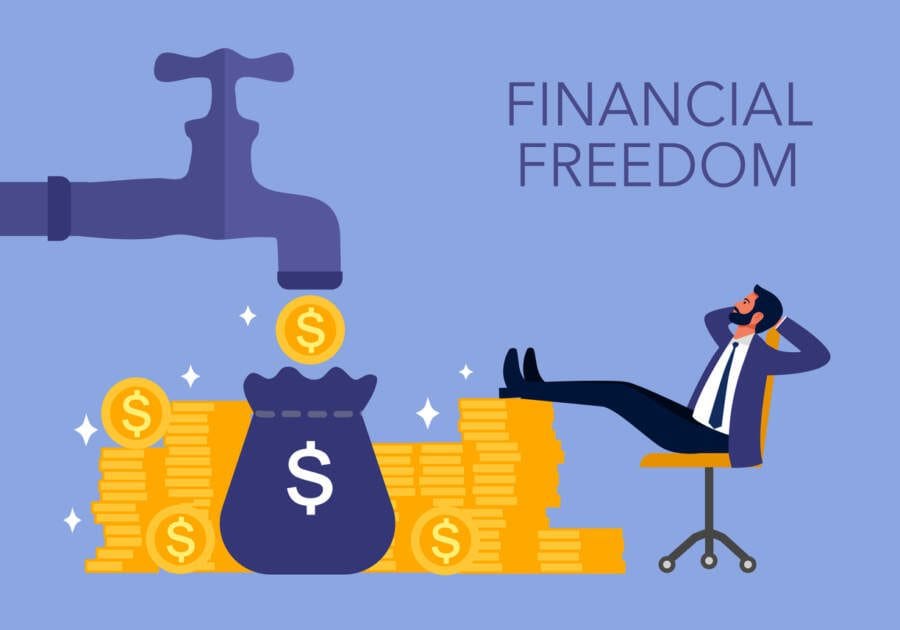
I. What Is Passive Income Investment?

Passive income investment can be a great option for those who want to make money without having to work for it. It involves investing your time and capital into passive income projects such as rental properties, stocks, dividend-paying investments, royalty-generating businesses, or ventures that continuously generate passive income over time.
These passive income investments typically generate a passive return on investment (ROI) of anywhere from 3-15% and leverage your hard-earned capital to eventually provide a passive stream of income or passive dividends. Not only does this allow investors to maintain a steady passive revenue stream but it also allows them to diversify their portfolios while managing the risk associated with different types of investments.
Therefore, passive income investments should be considered carefully by those looking to diversify their portfolio and begin generating passive income. Passive income investment is a form of passive income derived from investments such as stocks, bonds, mutual funds, and real estate.
Instead of actively trading these securities for short-term gains, passive investors hold them over the long term to create an additional stream of income in the form of dividends and interest payments.
These passive investments often have lower volatility and require minimal effort on behalf of the investor to generate passive income. While passive income investments can be an attractive option for those with limited knowledge or experience in investing, they should always be pursued after consulting a financial professional, as they carry different levels of risk depending on their type.
A passive income investment is something that not everyone takes advantage of but should – passive income investing can be a great way to maximize the value generated from your current income. Passive income investments include stocks, bonds, and real estate holdings which generate returns whether the financial market is up or down.
What makes passive income investments so attractive is that they allow you to immediately begin making money while allowing you to maintain control of your investments in perpetuity.
With passive income investments, you don’t have to constantly check in with your portfolio because it works on autopilot – passive income investing gives you the freedom to passively grow your wealth over time.
II. Benefits Of Investing In Passive Income

Investing in passive income opportunities can be a great way to supplement your regular income and create more financial freedom. Passive income investments provide passive, lucrative sources of income, which means that you won’t need to spend your time actively managing investments or worrying about market fluctuations—that’s what makes passive income different from other types of investments.
On top of all this, passive investments tend to require very little capital; some passive income streams don’t require any up-front capital at all! This makes passive investments an appealing option for anyone who might be feeling hesitant when it comes to costly or time-consuming investment ideas.
Ultimately, passive income has the potential to give investors the money and resources they need without impacting their day-to-day lives too negatively. Investing in passive income is a great way to generate passive income, offering much more financial stability and protection over the long term than other more traditional investments.
Passive investment income can provide individuals with a passive source of cash flow that can continue growing with diversified investments and the success rate increases as assets grow over time.
Additionally, passive income investing provides many tax benefits as passive income streams are usually taxed at lower rates, leaving investors potentially with more money in their pocket.
Finally, passive income investing can offer greater flexibility, allowing individuals to take the time needed to pursue other interests. As a result, passive investing in passive income is an excellent way to secure one’s financial future. Investing in passive income can be a great way to ensure your financial stability and future prosperity.
Passive income is any type of income that requires minimal effort, such as interest from investments or passive business activities. By investing a portion of your savings in passive income opportunities, you have the potential to generate steady revenue while freeing up time and energy to focus on other important matters.
Not only that, but passive income investments are often tax-advantaged, making them even more attractive and beneficial for long-term wealth building. Additionally, with the right passive income streams in place, your money can continue to grow over time through compounding interest that has the potential to offer one of the highest rates of return available when managed properly.
III. Types Of Passive Income Investments

Passive income investments, such as real estate and dividend stocks, provide a convenient and passive way to earn money. With passive income investments, unlike non-passive investments like trading stocks or flipping houses, you can still receive passive income even if the service does not require your active participation.
Real estate investments are typically done with rental properties which offer a steady stream of passive income investments actively managing other portfolios. Dividend stocks also provide passive income when a company’s profits allow shareholders to receive regular dividends. While these types of passive income investments can give people time and financial freedom, they require an upfront investment to be successful.
Investing in passive income is a great way to build wealth and diversify your portfolio. The most common forms of passive income investments are dividend-paying stocks, real estate investments, and peer-to-peer lending. Dividend stocks tend to yield generous payments that can be automatically reinvested into the stock for more passive income potential.
Real estate investments can be lucrative due to rental fees and appreciation potential but require an up-front capital investment. Peer-to-peer lending platforms provide passive investors the opportunity to earn returns on preset loan terms; lenders act as a middleman from borrowers to traditional banks.
All three passive investment opportunities offer reliable sources of income with varying degrees of risk depending on the type of passive income chosen. Passive income investments are an attractive passive income option for many people.
While passive income investments don’t usually require a large upfront sum of capital, or any active management or upkeep to generate passive income, the rewards for those who take the passive route can be lucrative.
Types of passive income investments range from interest-bearing savings accounts and Certificates of Deposit (CDs) to real estate investment trusts (REITs) and dividend stocks that can offer both capital appreciation potential and passive income streams.
No matter what passive income investment you choose, research and financial planning are key to maximizing your passive income potential.
IV. Advantages Of Passive Income Investment

1. Low Risk
Investing in passive income streams can be an extremely lucrative way to generate ongoing passive returns on your money, with minimal risk. The advantages of passive investment lie mainly in its low-risk factor as passive investments are typically bundled assets that inherently bear a smaller degree of risk than non-bundled assets.
Additionally, passive investments such as exchange-traded funds require less management and research time since the portfolio is managed by professionals. Investors can benefit from regular dividends and capital gains when passive investments are held for the long term.
Furthermore, passive investments often feature lower fees compared to actively managed funds, reducing the overall costs for investors. Investing in passive income is an excellent way to gain financial stability without having to worry about a high-risk investment.
Passive income investments are great for creating alternate streams of income and help achieve long-term financial goals because they have low risk associated with them. With passive income investments, there is usually minimal involvement from the investor, as most of the work takes place hands-off with no daily obligations or active decisions required.
Additionally, passive income requires very little capital investment so it’s perfect for those on a budget. By investing in passive income, you can generate consistent profits that can be used to build wealth over time without committing too much effort and money.
2. Low Maintenance
Investments that have low maintenance requirements offer passive income, such as rental property and dividend-paying stocks. For instance, a rental property pays passive income through rent payments while stock investors may be paid passive dividends periodically.
These investments mean less work and fewer expenses, making them attractive to those looking to invest at the lowest possible cost. They also provide more cash flow than other investments that command higher maintenance or require more research or close monitoring of performance.
Low-maintenance investment options can open up the passive income investing market to individuals without large amounts of capital or experience in financial markets, who are simply looking for an easy way to make passive income. Investing in passive income streams has many advantages.
One of the biggest benefits of passive income investment is its low maintenance. Unlike active investments which may take up significant amounts of time and energy to stay on top of, passive investments are typically set up once and require minimal effort to maintain. This means passive investors have more time and resources to dedicate to other aspects of their lives or other investments.
Passive income investment has a variety of advantages, not least of which is low maintenance requirements. Investing in passive income requires very little effort to maintain its performance. Once the initial work is done such as setting up the passive income stream or purchasing a passive income investment, then users can expect very little input in terms of time and resources. This leaves them free to enjoy their passive income without having to continuously exert extra effort or expend large amounts of energy on it.
3. Tax Benefits
Investing can be a great way to passive income and one of the best advantages of that is tax benefits. Capital gains are taxable, but since passive investments are often long-term investments, they can lead to lower taxes due to profits.
There’s also the possibility of avoiding capital gains tax entirely when certain passive income investments qualify under the provisions of a 1031 exchange, giving investors valuable tax savings by deferring their taxes until they eventually sell off their passive investment.
With 23 and other ways to invest passively, you can enjoy not only steady returns but also more money in your pocket come tax season. One of the great advantages of passive income investment is the tremendous tax benefits it offers.
Tax savings are available to passive investors around the world, with many countries offering various deductions and exemptions that allow investors to keep more of their hard-earned money.
For instance, in many developed countries, passive income investment can be deferred until it must be paid, allowing passive investors to enjoy a larger portion of their passive income upon redemption.
Furthermore, passive income investments made through qualifying retirement plans such as 401(k) or Self-Directed IRA can offer a significant way to reduce your taxable income each year and potentially lead you toward a more comfortable retirement. In summary, passive income investment provides generous tax benefits that investors would be wise not to overlook when making decisions on how to invest their money.
4. Diversification Of Investment Portfolio
Investing in passive income can be a great way to diversify your investment portfolio and protect yourself against risk. Aside from the potential of increasing your passive income streams, diversifying your portfolio helps you spread out the risk across multiple passive income investments.
This ensures that one investment won’t drastically affect the success or failure of your overall financial plan. Before investing, it is important to research each passive income option you’re considering so that you understand what kind of return on investment you’re likely to receive and how much money you need to initially invest.
Diversifying your passive income investments may help safeguard yourself from financial exploits and maximize the potential of enjoying passive income when done properly.
Diversification of an investment portfolio is essential for passive income. By diversifying, you can hedge against downturns in one sector or asset by investing in another and spreading the financial risks associated with investing. Investing in a variety of asset classes such as stocks, bonds, mutual funds, and real estate can ensure that your passive income idea doesn’t become too heavily reliant on any single source of income.
This way if one market experiences losses or stagnation, other markets may be able to buffer the impact and cushion the blow. Investing in a diversified portfolio is a smart passive income strategy that can help you build a secure financial foundation and reach your financial goals.
V. Disadvantages Of Passive Income Investment

1. Returns Are Not Guaranteed
Investing in passive income can be an attractive strategy, but it’s important to remember that returns are not guaranteed. With passive investing you can often expect passive income to flow through dividends and capital gains; however, these forms of income may not be as consistent as other forms of active income or even from investments that guarantee a fixed return.
Even with the potential for passive income, risks exist and potential losses should be taken into account when constructing a passive investment plan. Understanding the underlying principles involved in passive investing and accounting for risks may help provide stability in uncertain markets so that returns are maintained despite market volatility.
Investing in passive income opportunities does not guarantee a steady return. It is important to understand that even passive investments carry certain risks, as there is always the potential of losing money when investing. returns are never guaranteed and investors should be prepared for their passive income investments to fluctuate over time.
It is recommended to diversify investments across different asset classes to mitigate losses if one passive income stream fails. Understanding the associated risks of passive income investment will put you in the best situation to experience success with passive income opportunities.
2. Limited Liquidity Options
With the stock market being volatile, passive income investments become even more attractive. For savvy investors, passive income investment can yield high returns with limited liquidity options.
While passive income investments are often higher risk, they have the potential to provide returns much larger than those available from traditional investments and can create a secondary passive income stream.
Whether you’re looking for long-term stability or short-term gains, passive income investment is an excellent way to expand your portfolio and increase overall returns by taking advantage of limited liquidity options. When seeking passive income investments, liquidity is an important factor to consider.
It is best to be aware of the limited liquidity options that come with passive income investments. It is possible to easily access or sell passive investments such as bonds and annuities during regular trading hours, however, passive income investments such as rental properties frequently involve transactions that can take weeks or even months to complete.
Therefore, passive income investors must factor such liquidity limitations into their financial plan if they are considering passive investments with more extended transaction timelines.
3. High Initial Investment Costs
Investing in passive income streams not only provides long-term benefits but also has low overhead costs. However, passive income investments usually require a high initial investment cost. This can be an intimidating factor for any investor that is just starting and may make them wary of passive income opportunities.
Many people are afraid to invest heavily upfront due to uncertainty about the potential return on their money. While passive income investments do come with an initial cost, the returns over time can be highly rewarding if it is done correctly.
All passive income investments require some amount of research and understanding of how the industry works before making a financial commitment. Investing in passive income sources can lead to a better financial future, but you must be willing to face the high initial investment cost and do your due diligence beforehand.
Investing can come with high initial costs, which discourages many potential passive income earners from coming on board. Large investments may require you to put forth a considerable amount of money upfront, which some people do not want to take the risk of doing.
However, passive income investments are undeniably attractive and rewarding in the long term; if you’re willing to take the plunge, they have the potential to yield a substantial return on your investment.
To make passive income investing accessible and less of a financial stressor, investigate all options available and look for ways to bring down the cost of your initial investment. One of the biggest obstacles preventing passive income investments is the high initial investment costs.
Many people are discouraged by the large upfront cost associated with passive investment approaches, and this challenge can be even more daunting when interest rates are low. Those looking to use passive income investments should consider taking advantage of financial advisors to ensure they gain maximum benefit from their investment dollars.
Not only can a financial advisor recommend lower-cost options like index funds and ETFs, but they can also help to develop strategies that bring long-term returns that outweigh higher upfront costs. By working with an experienced financial advisor, passive-income seekers have access to information and insight that can save time and money over the long haul.
4. Market Conditions And Regulations Can Impact Returns
Investing in passive income can be a great way to secure financial stability, as it provides returns from predetermined sources. Unfortunately, both market conditions and changes in regulations can have immense impacts on passive income investments.
Market conditions heavily affect passive income investments that rely on stock prices, such as dividend stocks and real estate investment trusts (REITs). In addition, certain regulations like taxes or minimum retirement age requirements can drastically alter the returns from passive income investments.
Passive income investors need to research the laws and market trends before investing to ensure the best return for their money. Investing in passive income streams can prove to be a smart move for those looking to maximize their financial future.
However, investors should keep in mind that market conditions and regulations can significantly impact their expected returns. The current political climate and economic trends may affect the value of passive investments, either positively or negatively depending on the specifics involved.
Those investing in passive incomes need to be aware of these changing conditions so they can adjust long-term plans accordingly, as these changes can make a huge difference in the efficiency of passive investment ideas.
Conclusion
Passive income investments offer a variety of advantages including tax benefits, diversification of investment portfolio, and steady returns. However, potential investors should be aware that there are also certain risks associated with passive investing such as limited liquidity options and high initial costs.
It is important to research the laws and market trends before investing so you can maximize your return on investment. With careful planning, knowledge of the markets, and an understanding of how regulations affect these investments, it is possible to find success in passive income investment strategies.


